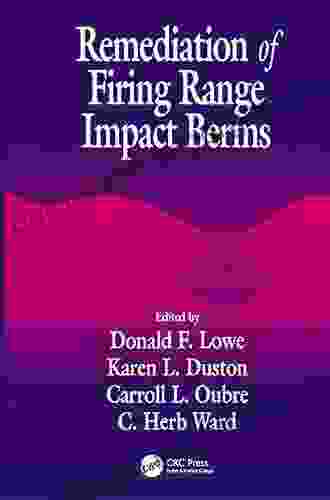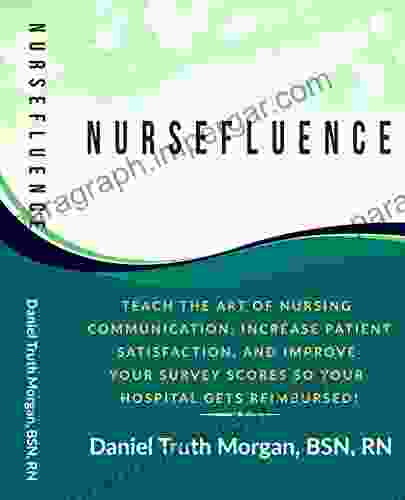Remediation of Firing Range Impact Berms: A Comprehensive Guide for Environmental and Range Management Professionals

Firing range impact berms are essential components of shooting ranges, serving as a primary means to contain and absorb bullets, fragments, and other projectiles. However, over time, these berms can accumulate significant quantities of lead and other heavy metals, posing a potential threat to human health and the environment. Proper remediation of firing range impact berms is crucial to mitigate these risks and ensure the safe and sustainable operation of shooting ranges.

4.4 out of 5
| Language | : | English |
| File size | : | 23564 KB |
| Text-to-Speech | : | Enabled |
| Screen Reader | : | Supported |
| Enhanced typesetting | : | Enabled |
| Print length | : | 416 pages |
Environmental and Health Hazards of Firing Range Impact Berms
The environmental and health hazards associated with firing range impact berms primarily stem from the accumulation of lead and other heavy metals. Lead is a toxic metal that can cause a wide range of adverse health effects, including neurological damage, learning disabilities, and cardiovascular disease. When lead-based ammunition is fired, a significant portion of the lead is deposited in the berm, where it can be released through leaching, wind erosion, or ingestion by wildlife.
In addition to lead, firing range impact berms can also contain other heavy metals, such as antimony, copper, and zinc. These metals can also be harmful to human health and the environment. For example, antimony can cause skin irritation and respiratory problems, while copper can damage aquatic life.
Remediation Techniques for Firing Range Impact Berms
The remediation of firing range impact berms involves the removal or stabilization of lead and other heavy metals to reduce their potential impact on human health and the environment. Various remediation techniques can be employed, depending on the scale of contamination, the type of berm material, and the available resources.
One common remediation technique is excavation and disposal. This involves removing the contaminated soil from the berm and disposing of it at an approved hazardous waste landfill. Excavation and disposal can be effective in removing large amounts of lead and other heavy metals, but it is also expensive and disruptive to range operations.
Another remediation technique is stabilization. Stabilization involves treating the contaminated soil with chemical agents or other materials to reduce the solubility and mobility of lead and other heavy metals. Stabilization can be less expensive than excavation and disposal, and it can be done without disrupting range operations. However, stabilization may not be as effective in reducing the overall risk posed by the berm.
In some cases, a combination of excavation and disposal and stabilization may be necessary to achieve the desired remediation objectives.
Selection of Remediation Technique
The selection of the most appropriate remediation technique for a firing range impact berm depends on a number of factors, including:
* The scale of contamination * The type of berm material * The available resources * The desired remediation objectives
It is important to consult with qualified environmental and engineering professionals to determine the most effective and cost-effective remediation strategy.
Case Studies
Several case studies have demonstrated the successful remediation of firing range impact berms using various techniques. For example, the U.S. Army Environmental Center conducted a pilot study at Fort Dix, New Jersey, to evaluate the effectiveness of excavation and disposal and stabilization for remediating lead-contaminated impact berms. The study found that excavation and disposal was more effective in reducing lead concentrations than stabilization. However, stabilization was less expensive and disruptive to range operations.
Another case study, conducted by the Texas Commission on Environmental Quality, evaluated the effectiveness of using a chemical agent to stabilize lead-contaminated soil at a firing range in Austin, Texas. The study found that the chemical agent was effective in reducing lead concentrations in the soil and that the stabilized soil met the regulatory standards for lead in soil.
The remediation of firing range impact berms is essential to mitigate the environmental and health hazards posed by these structures. Various remediation techniques are available, and the most appropriate technique for a particular range will depend on a number of factors. It is important to consult with qualified environmental and engineering professionals to determine the most effective and cost-effective remediation strategy.
4.4 out of 5
| Language | : | English |
| File size | : | 23564 KB |
| Text-to-Speech | : | Enabled |
| Screen Reader | : | Supported |
| Enhanced typesetting | : | Enabled |
| Print length | : | 416 pages |
Do you want to contribute by writing guest posts on this blog?
Please contact us and send us a resume of previous articles that you have written.
 Book
Book Novel
Novel Page
Page Chapter
Chapter Text
Text Story
Story Genre
Genre Reader
Reader Library
Library Paperback
Paperback E-book
E-book Magazine
Magazine Newspaper
Newspaper Paragraph
Paragraph Sentence
Sentence Bookmark
Bookmark Shelf
Shelf Glossary
Glossary Bibliography
Bibliography Foreword
Foreword Preface
Preface Synopsis
Synopsis Annotation
Annotation Footnote
Footnote Manuscript
Manuscript Scroll
Scroll Codex
Codex Tome
Tome Bestseller
Bestseller Classics
Classics Library card
Library card Narrative
Narrative Biography
Biography Autobiography
Autobiography Memoir
Memoir Reference
Reference Encyclopedia
Encyclopedia Joel Anderson
Joel Anderson Jill Lenk Schilp
Jill Lenk Schilp Jill Bough
Jill Bough John Addington Symonds
John Addington Symonds Joel Paris
Joel Paris Jill Coil
Jill Coil John C Davis
John C Davis Jennifer A Reich
Jennifer A Reich John Andreas Olsen
John Andreas Olsen Jens Volker Kratz
Jens Volker Kratz Jennifer Jackson
Jennifer Jackson Jemima Flendt
Jemima Flendt Jim Richards
Jim Richards Joe Dixon
Joe Dixon Jill A Stoddard
Jill A Stoddard Jes Battis
Jes Battis Jim Peterson
Jim Peterson Joe Meno
Joe Meno Jennifer Ford Berry
Jennifer Ford Berry Jennifer Burman
Jennifer Burman
Light bulbAdvertise smarter! Our strategic ad space ensures maximum exposure. Reserve your spot today!

 Arthur Conan DoyleMobsters, Gangs, Crooks, and Other Creeps: Volume 1 - New York City Mobsters...
Arthur Conan DoyleMobsters, Gangs, Crooks, and Other Creeps: Volume 1 - New York City Mobsters...
 Colin RichardsonThe Contractor's Guide to Bidding on Classified Work and Building Compliant...
Colin RichardsonThe Contractor's Guide to Bidding on Classified Work and Building Compliant... Finn CoxFollow ·11.4k
Finn CoxFollow ·11.4k John UpdikeFollow ·3.5k
John UpdikeFollow ·3.5k Kendall WardFollow ·13.3k
Kendall WardFollow ·13.3k Ralph EllisonFollow ·15.9k
Ralph EllisonFollow ·15.9k Fernando BellFollow ·6.2k
Fernando BellFollow ·6.2k Ian PowellFollow ·4.6k
Ian PowellFollow ·4.6k Jedidiah HayesFollow ·7.4k
Jedidiah HayesFollow ·7.4k Mario BenedettiFollow ·14.1k
Mario BenedettiFollow ·14.1k

 Christian Barnes
Christian BarnesUnleash Your Creativity: Build Interlocking 3D Animal and...
Discover the Art of Paper...

 Terry Bell
Terry BellUnveiling the Secrets of Winning: A Comprehensive Guide...
In the realm of chance and fortune, the...

 Albert Camus
Albert Camus101 Things That You Should Do Before Leaving The House In...
Starting your day right is...

 Anthony Burgess
Anthony BurgessForcing Move 2024 Volume: Unleash Your Inner Grandmaster
Embark on an extraordinary chess...
4.4 out of 5
| Language | : | English |
| File size | : | 23564 KB |
| Text-to-Speech | : | Enabled |
| Screen Reader | : | Supported |
| Enhanced typesetting | : | Enabled |
| Print length | : | 416 pages |












